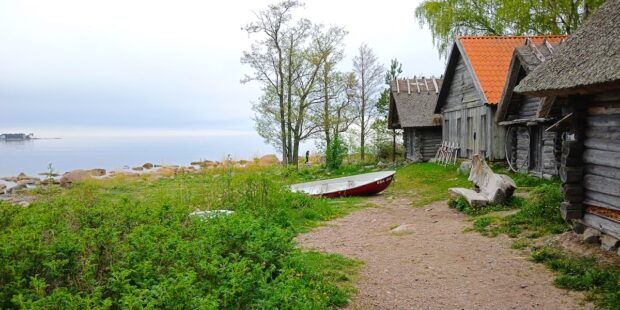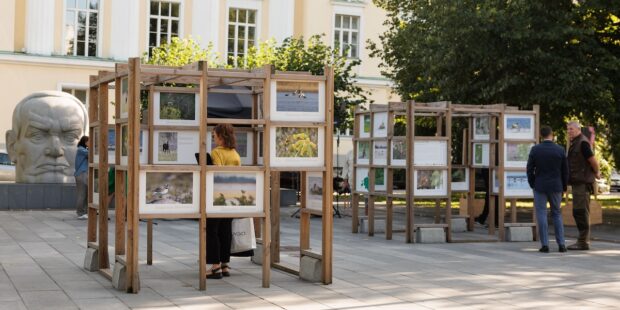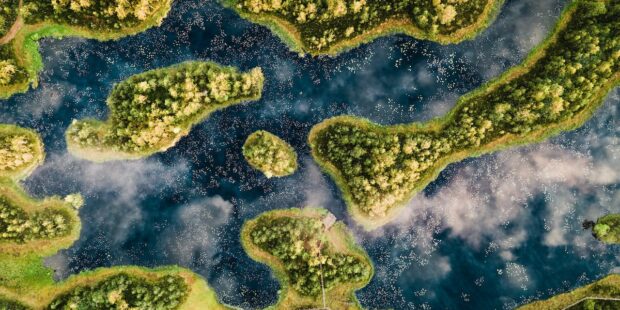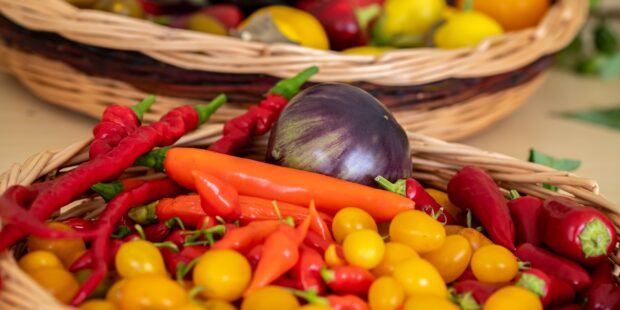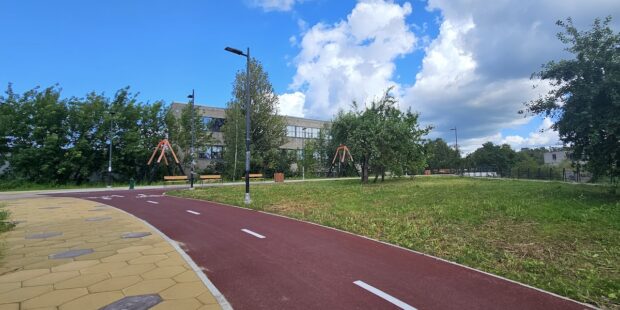The beautiful nature and culture of Pärnumaa
Text Mikko Virta Photos Priidu Saart, Mikko Virta, Romet Vaino, Julia Kivelä, Visit Pärnu
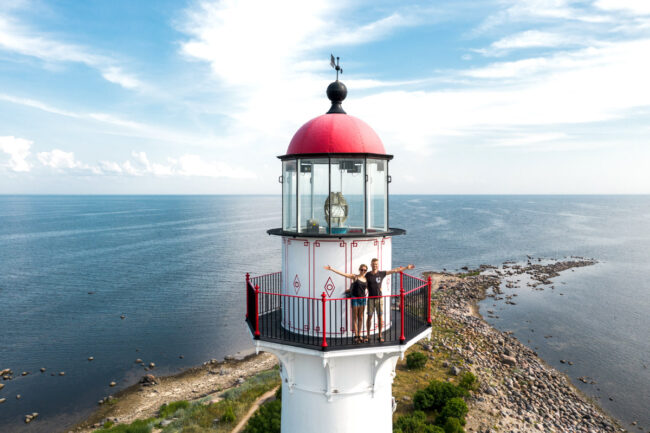 Magnificent landscapes open from the top of Kihnu lighthouse.
Magnificent landscapes open from the top of Kihnu lighthouse.
Pärnu is the summer capital of Estonia and a familiar destination for Finnish and foreign tourists as well. However, for many, the rest of the wonders of the county go unexplored.
If lounging on the beach and sitting on a terrace start to get boring, you should shake off the dust of the summer capital and head to the countryside. Within a short drive from Pärnu, there are several interesting day trip destinations where you can get to know the local culture and nature.
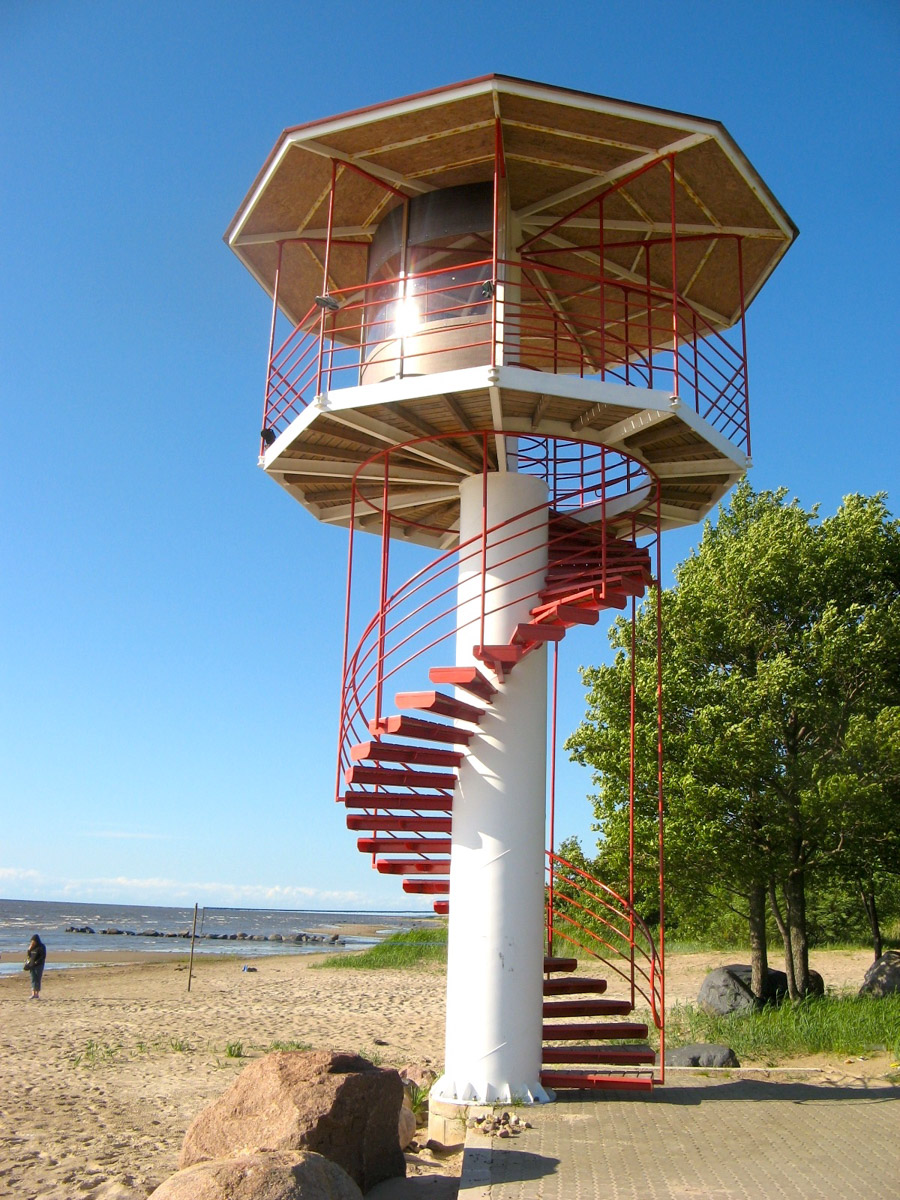
Kabli
In Kabli, you will meet happy people, cyclists and caravanners. A gentle summer breeze blows from the Gulf of Livonia and offers a nice cooling effect during hot weather.
There is constant traffic in the parking lot of the village store. There are people at the tables on the courtyard terrace, drinking coffee and enjoying the delicacies of the bakery in the village shop. Kabli’s sweet and savoury pies are known far beyond Pärnumaa.
The village’s summer buzz is at its peak in midsummer, and the contrast with the calm atmosphere of autumn is quite strong. For the occasional visitor, Kabli offers a relaxing summer experience. The sandy beach with its observation tower is a popular destination where it is worth stopping, even if swimming is not in your plans. The beach has a small promenade, a playground and tables for eating snacks.
In the summer, you can spend several days in Kabli because there are numerous guesthouses, resorts and even one hotel in the region. Many of the accommodation establishments are located on the seafront.
If you like camping, you should go to the camping areas of the Estonian Forestry Board, or RMK, south of Kabli. In the Lemme and Krapi areas, there are dozens of barbecue areas and campfire sites, the use of which is free of charge. Lemme also has a cafe, a shop, shower facilities and a sauna. In both places, the wonderful sandy beach starts right at the edge of the camping area.
If you are interested in nature, you should start hiking at the wonderful RMK nature centre, which is located on the northern edge of the village of Kabli. The centre has interesting exhibits about Estonian nature on two different floors. There you can also get good tips for camping and brochures and maps. A nature trail starts from the yard of the centre, which runs along the seashore to the village of Kabli and to the yard of the bird station there.
It is impossible to pass the Kabli bird station without noticing it. Huge bird-catching structures are located right next to the road. They are used to ring thousands of small birds that migrate south every autumn. It has been in operation since 1969. It is worth climbing the bird tower in the yard of the station because from its top there is a great view of the coast and over the village.
In addition to Kabli, there are also other charming little villages on the coastal road leading south from Häädemeeste, such as Jaagupi, Treimani and Ikla. On the same trip, it is easy to detour to Ainaž on the Latvian side, where there is a nature trail that runs along the border of the countries. It is only about 15 kilometres from Kabli to the border.
Häädemeeste’s coast is followed by the Romantic Boardwalk themed route, along which there are many interesting natural and cultural sites. The popular Kabli Sunset Festival takes place in July and August in various villages along the coast.
Did you know, that the coastal hiking trail from Tallinn to Latvia and Lithuania also goes through the beaches of Kabli?
How to get there? It is about 50 kilometres from Pärnu to Kabli. A local bus goes from Pärnu to Kabli a few times a day.


Soomaa National Park
The Riisa swamp is an unforgettable experience. And not because of the mosquitoes, but because of the wonderful marshland scenery. The sedge is blooming and it’s completely quiet. Only the wind hums in the pine forest bordering the swamp.
It’s nice to walk along the well-maintained track. On the route, you don’t have to be afraid of stepping on soft dirt. While walking, you can enjoy the scenery, and keep an eye on the sky in case you see an eagle nesting or flying nearby.
The pine trees curve to the shore of the salt pond. Cumulus clouds mirror the blue surface of the pond – mosses, grasses and birch trees complete the fine work of art. The view is stunningly beautiful.
The wooden planks showing wet footprints coming from the pond, show that you can take a dip in the salt pond here!
The first dip in the swamp is always unforgettable. The dark brown water of the swamp caresses you from all sides. The sun has warmed it to a pleasant temperature. When you try to go deeper with your toes, the water feels cool. At the end of a swim, it’s nice to go up the ladder to the planked area to dry off.
The Riisa trail is certainly one of the most popular in Soomaa National Park, and no wonder. It is located right on the border of the national park when coming from the direction of Pärnu and is a suitable size. The route, which is about five kilometres long, has a bird tower, swimming spots, benches and a toilet.
The trail is barrier-free and over a metre wide for over a kilometre. So even with a wheelchair or stroller, you can get to the first salt ponds.
Soomaa National Park is also an excellent setting for camping. Eight different nature trails, numerous campfire sites and a few deserted huts await the hiker. In addition to Riisa, there are also swimming spots along the Ingats trail. Camping is allowed in marked places. You can start your hike at the Tõramaa nature centre, where you can get good hiking tips and maps of the area.
Soomaa is also a popular canoeing destination, the picturesquely beautiful rivers are suitable for a few hours of canoeing. Canoes and equipment can be rented from local entrepreneurs. Soomaa’s traditional Haabjas (a ‘dugout canoe’), entered the UNESCO World Heritage List in 2021.
Did you know, that Soomaa’s flood times are called the fifth season?
How to get there? Riisa’s nature trail is about 40 kilometres from Pärnu, and it is about 50 kilometres to the nature centre of the national park. It is about 40 kilometres from Viljandi to the nature centre. Riisaa can also be reached from Pärnu by local bus a few times a day.
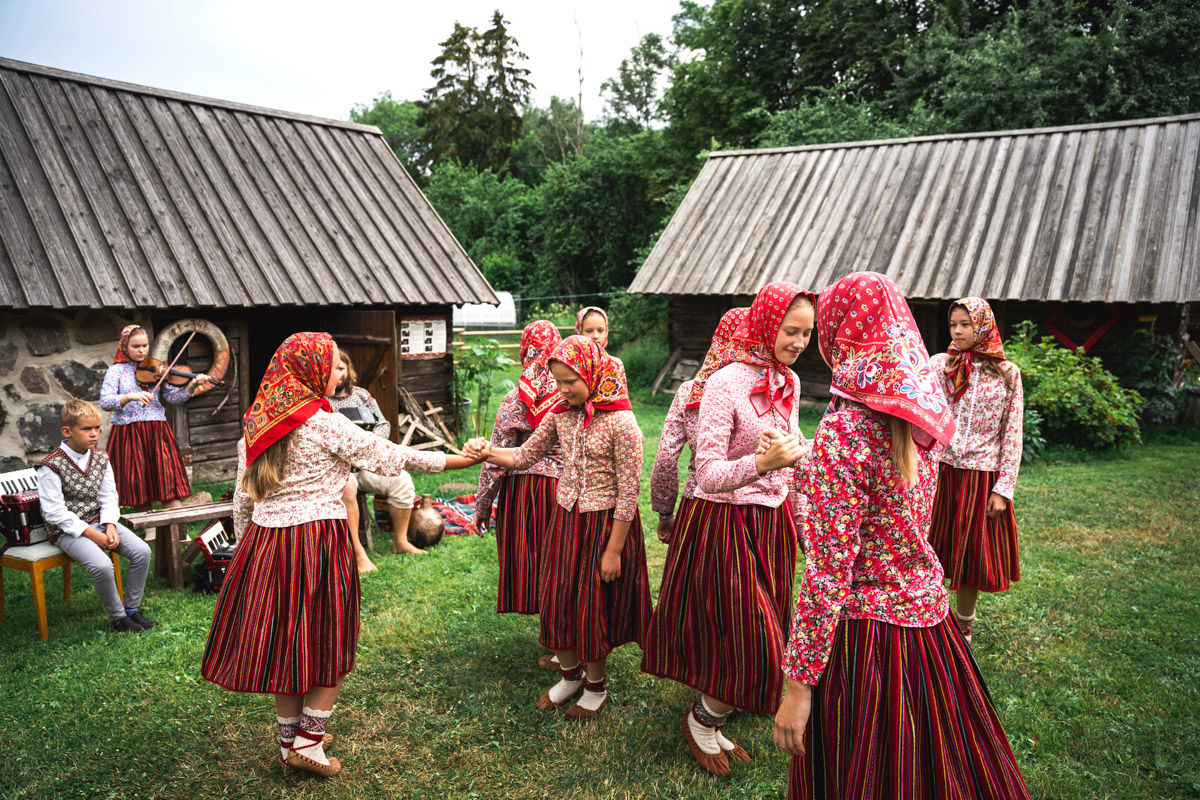
Kihnu
Kihnu’s biggest attraction is the island’s local way of life and its inhabitants. On the island, you can meet women in red-striped national skirts. They are not only party clothes, but a part of everyday life. It is said that a Kihnu woman has twenty different striped skirts. The best is for parties, the most worn is suitable for the vegetable garden. The blue-black colour of the skirt indicates the wearer’s time of mourning.
Kihnu’s traditional culture is so unique that it has made it to UNESCO’s list of intangible cultural heritage. In addition to national costumes, traditional songs, playing music together, making handicrafts and its own dialect are valued. In Kihnu, you can sense the appreciation of old customs and beliefs, they are cherished with great love.
The best way to get to know the culture of Kihnu is in the museum, which is located next to the church and school. In addition to the wonderful national skirts and handicrafts, the museum exhibits old objects and photographs that present the traditional livelihoods of the people of Kihnu: fishing and seal hunting.
One of the most important buildings on the island is the lighthouse on the southern tip. The handsome lighthouse is worth a visit, as the scenery from its top is magnificent. The lighthouse is also like a work of art from the inside, there are many colours and beautiful details. Completed in 1864, the lighthouse was imported in parts from England.
There is a small sandy beach near the lighthouse, where you can dip your toes in the water. The most popular swimming spots on the island are Rock City and Linaküla beaches.
Due to the island’s small size, it can be easily explored by bicycle, which can be rented from the port, from where it is, for example, only six kilometres to the lighthouse.
Although Kihnu is a great day trip destination, you can stay on the island for a few days. Accommodation is offered by various holiday houses and homestays. In them, you can experience the authentic local way of life.
In the middle of summer, Kihnu can be quite crowded or even a little overcrowded, so you should schedule your trip on weekdays if possible.
Did you know, that the most famous resident of Kihnu is the singer Kihnu Virve aka Virve Köster, after whom the island’s connecting ship is also named?
How to get there? Kihnu can be reached from the port of Munalaid a few times a day by the ship Kihnu Virve. Tickets should be bought in advance. Munalaid harbour is about 40 kilometres from Pärnu. The port can also be reached from Pärnu by local bus.
By bus in Pärnumaa
- You can travel in Pärnumaa by buses that leave from Pärnu bus station. Timetables can be found at: peatus.ee
- There is no free county bus service in Pärnumaa, as in several other Estonian counties. However, travelling by bus is very affordable. A ticket anywhere costs only 1.5 euros.
Good links:
- visitparnu.com
- visitestonia.com
- soomaa.com
- rannatee.ee
- maaturism.ee
- veeteed.ee
- baltictrails.eu
- loodusegakoos.ee

To learn more about this and similar topicsCulture Haabjas Kabli Kihnu Nature Pärnu Pärnumaa Soomaa National Park

